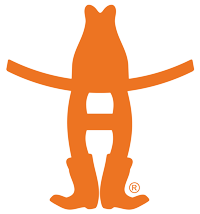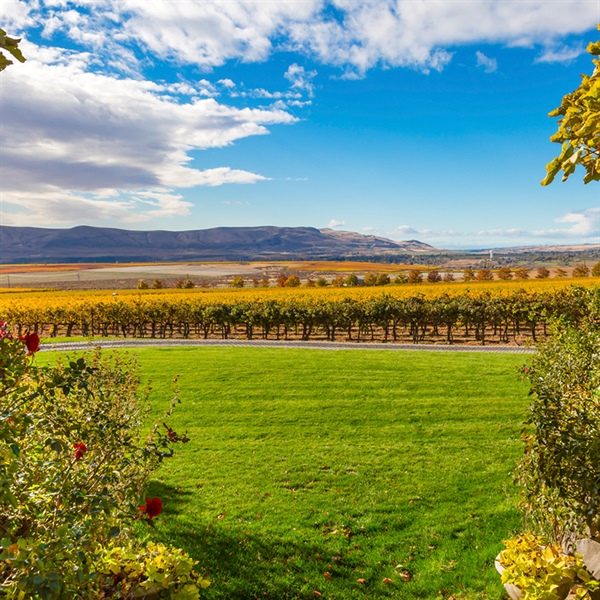By: Nan McCreary
Wines from Washington State will be featured during the 2022 Houston Livestock Show and Rodeo™ Rodeo Uncorked! International Wine Competition. The competition, one of the largest in the country, will be held Nov. 12, 13 and 14, 2021.
Washington State is second in the U.S. only to California in premium wine production. With over 1,000 wineries, the state produces 17.7 million cases of wine annually, contributing $8.4 billion a year in state revenue. Along with the wine business, wine tourism has rapidly expanded, attracting millions of visitors to wine country. Among both wine critics and consumers, Washington has developed an outstanding reputation for excellence as well as value in its wines.
Washington’s first vineyards were planted in 1825 by the Hudson’s Bay Company at their fur trading post just north of the Columbia River at Ft. Vancouver. In those early days, homesteaders coming east via the Oregon trail planted grapes in several areas in eastern Washington, primarily for home use. In the 1950s and 1960s the precursors of two of today’s biggest wineries — Chateau Ste. Michelle and Columbia Winery — were founded and set the stage for commercial winemaking and the explosive growth to follow in the 70s. During that time, wineries, including Leonetti Cellars and Quilceda Creek, put eastern Washington on the wine map for noble reds, especially for Cabernet Sauvignon and Merlot. With the state’s commitment to viticultural research and winemaking expertise, Washington is now firmly established as a wine-growing region that can compete with any other wine region on the world.
Located on approximately the same latitude (46◦N) as some of the great French wine regions of Bordeaux and Burgundy, Washington State wine country includes 19 federally recognized American Viticultural Areas (AVAs). Washington grows 80 grape varieties, ranging from Aglianico to Zinfandel. The state’s signature red is Cabernet Sauvignon; the white is Riesling. The state is also known for its Merlots, Syrahs and Chardonnays. According to an article in Wine Enthusiast, while there is great diversity in the grapes grown in Washington, there is also a similarity in their tasting profiles. “In general,” the article says, “these wines bring together a New World ripeness of flavor (think of the opulence of fruit from wine regions like California and Australia) with an Old World type of acid and tannin structure (similar to the austerity of the wines from places like France and Italy).”
What distinguishes the state’s wine is a combination of geography, climate and geology. Geographically and viticulturally, Washington is divided into two sections: west of the Cascade Mountain chain, and east of the Cascades. The cooler, wetter Western Washington (which includes Seattle, Tacoma and Olympia) produces less than 1 percent of the state’s wine and is home to one AVA, the Puget Sound AVA. The remaining AVAs are east of the Cascades. The presence of this mountain chain creates a rain shadow, where moisture-laden air from the Pacific cools as it rises and releases its moisture in the form of rain or snow. Once you cross the Cascades into eastern Washington, the climate becomes warm and dry. This is the home of the Columbia Valley AVA, which is by far the state’s largest growing region at nearly 11 million acres.
Almost all of Washington’s other growing regions are sub-appellations of the Columbia Valley. The warm arid climate is ideal for grape-growing. With 300 days of sunshine, grapes are bold and fruit-forward. Cool, nighttime temperatures help them attain acidity, and provide a balance that gives rise to vibrant, fresh-tasting wine. Eastern Washington is also defined by its soil — gravely deposits covered with layers of sand and silt created by the Missoula Floods, a series of catastrophic glacial floods that swept through the area 15,000 years ago. These deposited sediments, along with wind-blown loess, are well-drained and contribute to increased aromatics.
With wines from Washington State as the featured region for the 2022 International Wine Competition, Rodeo fans will have several opportunities to enjoy a unique selection of delicious wines created by innovative winemakers at several Rodeo Uncorked! events. Winning wines from Washington State, along with other winning varieties from the competition, will be served during Roundup & Best Bites, February 20, the Champion Wine Auction & Dinner, February 27, and in the Champion Wine Garden daily during the Rodeo, which runs from February 28 to March 20. To learn more about Rodeo Uncorked! events, visit rodeohouston.com/wine.


